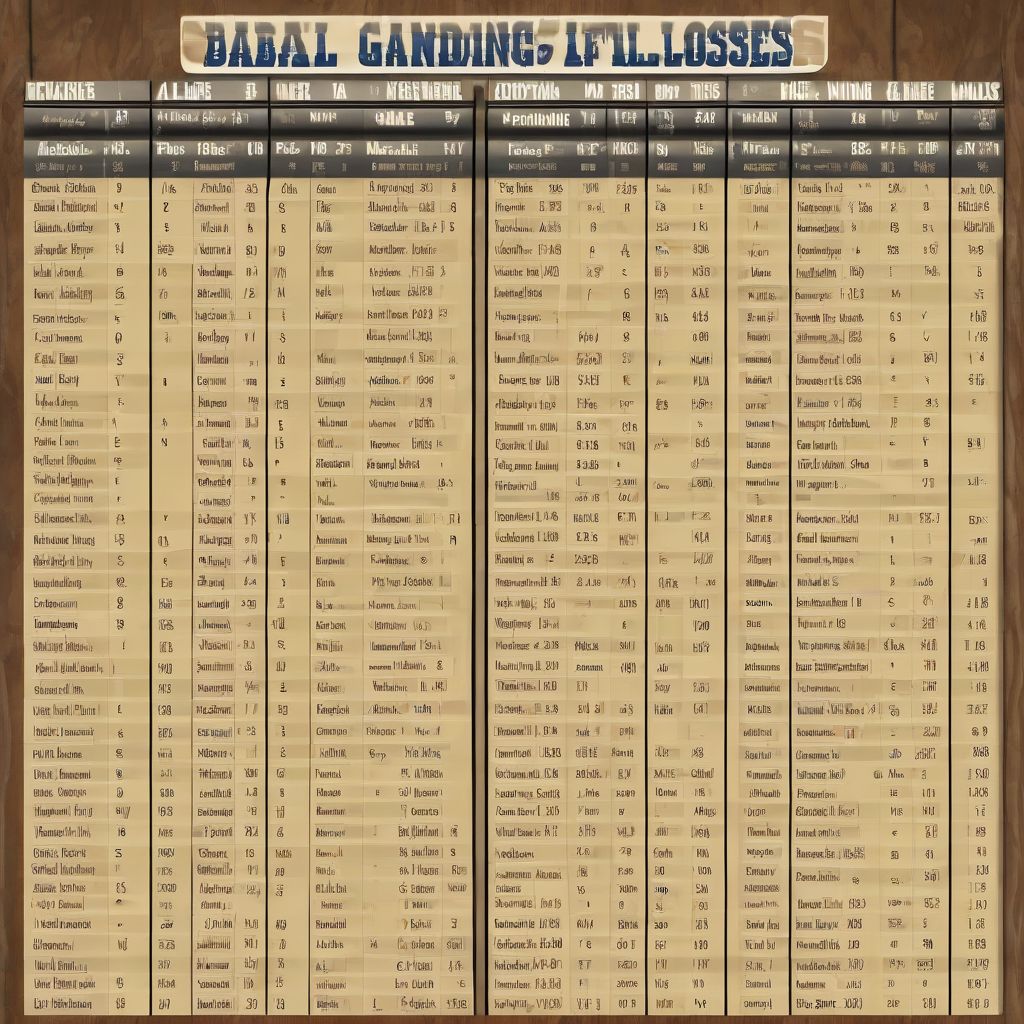“It’s a long season, and anything can happen!” You’ve likely heard this phrase echoing around baseball stadiums and living rooms as fans anticipate thrilling upsets and dramatic finishes. But to truly appreciate those exhilarating moments, understanding how baseball league standings work is key. Think of it like this: wouldn’t a delicious, nutritious meal be even more satisfying if you knew exactly how each ingredient contributed to its flavor? That’s what we’re aiming for here – breaking down the ingredients of a baseball league standings table so you can savor every win, loss, and nail-biting game down the stretch.
The Building Blocks: Games, Wins, Losses, and Ties
Just like a balanced diet starts with understanding your macros, grasping baseball standings begins with the basics:
- Games Played: Simply put, this is the total number of games a team has participated in during a season.
- Wins (W): This signifies the number of games a team has won. Each win is a step towards playoff contention.
- Losses (L): This represents the number of games a team has lost. While nobody enjoys seeing their team lose, these are an inevitable part of the game.
- Ties: Though less common in professional baseball today, some leagues still allow for ties, which occur when a game ends with both teams having the same score.
These four elements form the bedrock of a team’s record, which is often displayed as wins-losses (e.g., 30-15). But there’s more to the story!
Beyond the Basics: Delving Deeper into Standings
To paint the complete picture, we need to consider these crucial factors:
1. Winning Percentage: The Real Measure of Success
While wins and losses offer a quick snapshot, winning percentage provides a more accurate comparison, especially between teams that have played a different number of games. It’s calculated as:
Winning Percentage = (Total Wins) / (Total Games Played)
A higher winning percentage indicates a stronger team performing better overall.
2. Games Behind: Gauging the Distance
The “Games Behind (GB)” column in standings is crucial for understanding the playoff race. It answers the question: How far behind is a team from the leader?
Here’s how it’s calculated:
- Find the difference in wins and losses between a team and the division leader. For example, if the leader is 30-15, and another team is 27-18, the difference is 3 wins and 3 losses.
- Divide the total difference by 2. In our example, (3+3)/2 = 3 games behind.
3. Division Rivals: The Battle Within
Most leagues are divided into divisions, creating exciting mini-competitions within the larger season. The team with the best record within their division often earns a playoff spot, adding another layer of intrigue to the standings.
4. Wild Card Race: A Second Chance
Don’t despair if a team isn’t leading their division! Most leagues also award “Wild Card” playoff spots to the teams with the best records outside the division leaders. This creates another race within the standings and often leads to nail-biting finishes.
Putting It All Together: Reading a Standings Table
A typical league standings table might look something like this:
| Team | W | L | Pct. | GB |
|---|---|---|---|---|
| Team A | 30 | 15 | .667 | – |
| Team B | 27 | 18 | .600 | 3 |
| Team C | 25 | 20 | .556 | 5 |
- Team A, the division leader, has the best record (30-15) and a winning percentage of .667. The “-” in the GB column indicates they are the team to beat.
- Team B is in second place, 3 games behind Team A. They are still very much in contention for the division title or a Wild Card spot.
- Team C, 5 games behind, has work to do but could still make a run with a strong second half.
 Baseball Standings Table
Baseball Standings Table
- Hardcover Book
- Posnanski, Joe (Author)
- Baseball Prospectus (Author)
- English (Publication Language)
- Keene, Anne R. (Author)
- English (Publication Language)
- Hardcover Book
- Enders, Eric (Author)
- Collis, Joe (Author)
- English (Publication Language)
- Hardcover Book
- Buckley Jr., James (Author)
- Johnson, Mike (Author)
- English (Publication Language)
- Hershey, Brent (Author)
- English (Publication Language)
- McCollister, John (Author)
- English (Publication Language)
Beyond the Numbers: The Human Element
Remember, while we’ve focused on deciphering the numbers, baseball is much more than statistics. Injuries, trades, and the ever-present “hot streak” can all dramatically influence a team’s standing. It’s this unpredictable, human element that makes following the standings so captivating.
Conclusion: Your Guide to Enjoying the Race
Understanding baseball league standings enhances your enjoyment of the game. It’s like being able to appreciate the nutritional value of your favorite meal while savoring every bite. So next time you glance at the standings, remember the interplay of wins, losses, and games behind. You’ll be well-equipped to appreciate the drama of each game and the thrill of the playoff chase. Now, go grab your favorite snacks (healthy, of course!) and get ready to enjoy the game!
What aspects of baseball standings intrigue you the most? Share your thoughts in the comments below, and let’s talk baseball!











